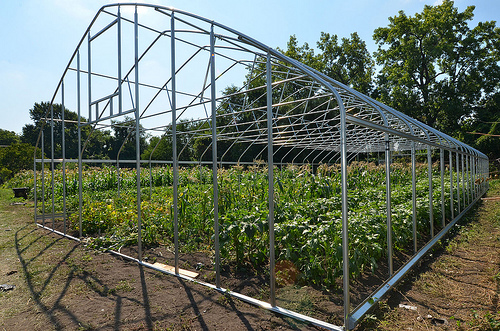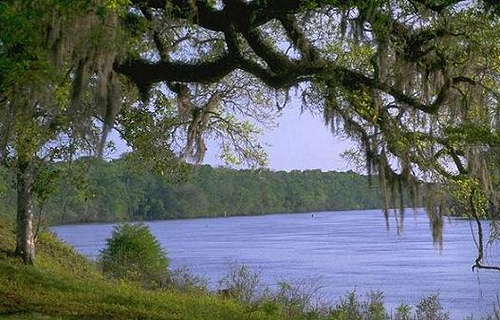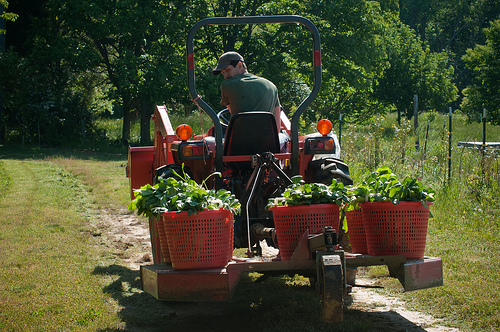
A polyethylene cover will be added to this frame to allow a seasonal high tunnel to do its job – provide a warmer climate for plants.
For years, Avon Standard has tilled the soil, planted the seeds and harvested the produce from his community garden with one purpose in mind—to feed people.
“My passion is to give and grow,” says Standard of the fruits and vegetables that he provides free to family, friends and the surrounding community. He recently took his efforts a step further. Read more »

View of the Apalachicola River from Fort Gadsden located on the river’s east bank. The site is the only historic landmark listed on the National Register of Historic Places in the U.S. Forest Service’s Southern Region. Photo Credit: Forest Service photo
Nestled in the southwest corner of Florida’s Apalachicola National Forest sits a historic fort known today as Fort Gadsden—the only historic landmark listed on the National Register of Historic Places in the U.S. Forest Service’s Southern Region.
The fort served as a Native American trading post, a British fort, as U.S. Fort Gadsden, and as a Confederate fort during the Civil War. The fort was also used as a safe haven for runaway slaves travelling the Underground Railroad, which ran south to Spanish Florida prior to 1821. Read more »

Reece Latron uses a tractor to carry baskets of greens harvested from Amy's Organic Garden in Charles City, VA. While the certification system is rigorous to ensure integrity of the USDA organic label, thousands of producers and handlers continue to invest in these activities to market their products as organic. USDA Photos by Lance Cheung
The USDA organic label is backed by a certification system that verifies farmers or handling facilities located anywhere in the world comply with the USDA Organic Regulations. Certification entails five steps: Read more »

The Olympic Experimental State Forest Area
The Olympic Experimental State Forest is the largest site in the U.S. Forest Service’s national network of experimental forests and it’s the only representative of the Olympic Peninsula’s temperate rain forest ecosystem, which is known for its extreme rainfall and growth rates.
Its large size, encompassing 270,000 acres, and history of innovation make this a forest that offers many opportunities for research and monitoring. Read more »




